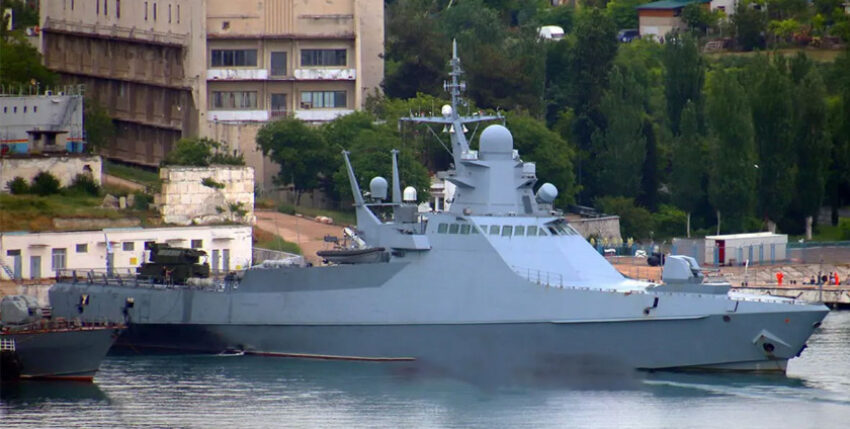Although the war of aggression against Ukraine launched by President Putin at the end of February 2022 is mainly taking place on land, its maritime component is no less strategically important for the two warring parties.
This is made clear by Russia's maritime blockade of the Ukrainian coast and harbour cities, including the dramatic developments surrounding the export of grain exports of global significance, the ongoing projection of a possible landing of Russian forces from the sea, the use of the Black Sea as an operation and launch area for Russian cruise missiles and the struggle for Snake Island.
It was against this background that we became aware in June when pictures emerged showing a Russian corvette of the Vasily Bykov class (project 22160) with a short-range tactical anti-aircraft missile system of the Tor-M2KM type strapped to the ship's flight deck.
The gate system used weighs around 15 tonnes and is operated by two men. It consists of a module including a radar and firing unit and can be operated independently of the ship's power supply and operations centre. It was striking that the module was kept in the dark olive colour of the land forces and that it was not visually adapted to its maritime environment.
The application is not in itself a sign of deficiency or structural incompetence - you are fighting with the equipment, capabilities and personnel you have, not the ones you would like to have. The fact is that the four active units of the Project 22160 class are equipped as standard with only one launcher for eight 9K338 Igla-S air-to-ground anti-aircraft missiles with a maximum range of around 6 kilometres. The Tor system increases the air defence capability against aircraft, helicopters, drones and missiles to around 15 kilometres with its eight missiles.
The question is rather how sustainable this improvised solution is and whether it actually fulfils its intended purpose. It is quite possible that the air defence system is subject to greater wear and tear in the maritime environment (salt content in water and air) than on land and therefore has to be serviced or even replaced more often, which in turn forces the patrol boat into port more often.

The Russian Black Sea Fleet will not have ordered such an improvisation lightly: Both sides have dealt and taken blows, although it should be noted that Ukraine, as a country without any significant surface forces - but with other maritime capabilities and presumably Western reconnaissance assistance - is clearly punching well above its weight class.
Ever since the sinking of the Russian guided missile cruiser Moskva in April 2022 by Ukrainian Neptune missiles and the permanent loss of Snake Island for Russia at the end of June, Moscow has taken seriously Kiev's maritime capabilities to challenge the Black Sea Fleet in the Black Sea with missiles, drones and its own reconnaissance and command and control assets.
You may also be interested in this article on the Ukraine conflict and the Black Sea:
Drift mines in the Black Sea










